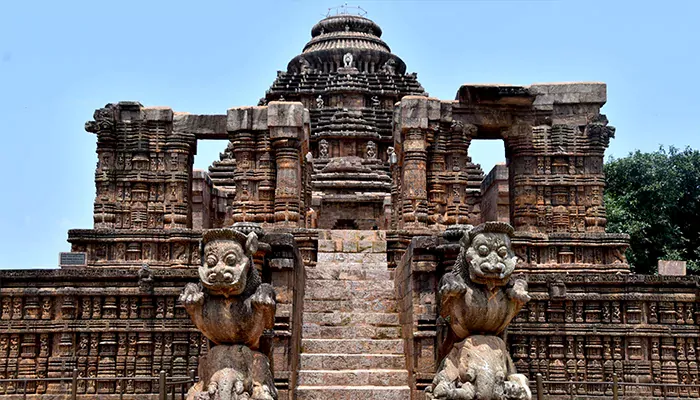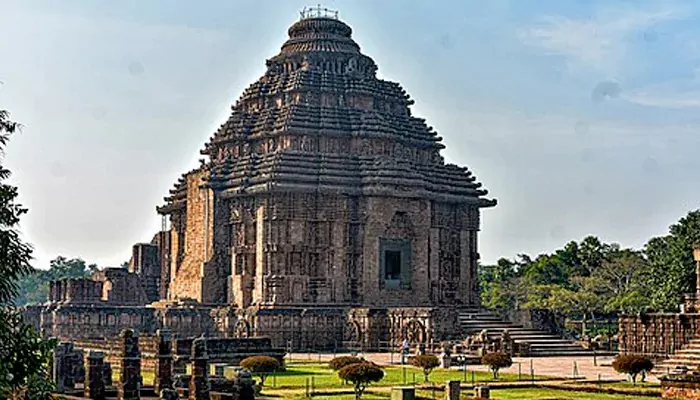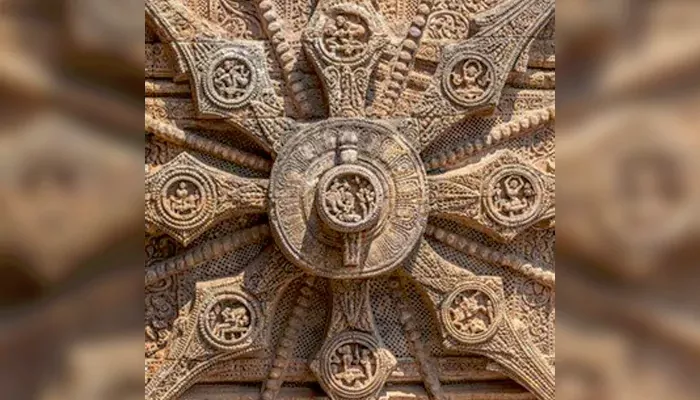
Unveiling the scientific brilliance hidden in the stones of Odisha’s solar marvel.
Technology today can predict eclipses down to the second because we have got satellites, AI, and supercomputers doing the job. But now, imagine going back a thousand years, when there was no modern science. And yet, a temple in ancient India did just that. Yes, we're talking about the Konark Sun Temple in Odisha, which was a cosmic calculator carved in stone. In a time when most of the world was still figuring out the basics of astronomy, India had already reached remarkable heights, and this temple was a great example of that.
Between 1243 and 1255 CE, King Narasimha Deva I of the Eastern Ganga dynasty commissioned a grand chariot for Surya, complete with 24 stone wheels and seven powerful steeds. Each wheel spans nearly 3 metres and serves as more than ornamentation: they are giant sundials, marking the hours as shadows fall across their rims.

European mariners, who referred to it as the “Black Pagoda,” used it as a coastal landmark. UNESCO later designated Konark a World Heritage site in 1984, lauding it as “a magnificent testament to Kalinga architecture, blending artistry with cosmic purpose”.
Each wheel’s spokes, twelve pairs of them, align precisely with shadowing patterns, allowing time to be read to within minutes. The temple’s east‑west axis is deliberate, ensuring the first rays of sunrise pass into the sanctum during equinoxes and solstices, making it a subtle cosmic handshake. Scholars see symbolism in every design: wheels for the months, spokes for praharas (three‑hour divisions of day), and the total structure mapping the flow of both solar cycles and time itself.
Might it have even predicted eclipses? While no inscriptions spell it out, texts like the Surya Siddhanta (which includes eclipse tables and trigonometry in Sanskrit verse) were known to the era’s astronomers. And on February 16, 1980, a total solar eclipse passed over Odisha, brushing close enough to inspire wonder at the temple's precision.
Far from superstition, Konark’s builders (perhaps led by architect Bishu Maharana) were deeply versed in Vedic astronomy, encoded through geometry and devotion. Each horse is named for a poetic metre, each wheel for a month, and the entire structure for Surya’s celestial chariot.

One enduring legend speaks of the idol floating, held aloft by a hidden magnet that disturbed sailors’ compasses. While historians treat this as a myth, its persistence points to admiration for the temple’s engineering precision.
The temple’s walls are alive with over 1,400 carved figures, dancing apsaras, hunting scenes, royal processions, mythical beasts, and lovers entwined. They show celebration and power, devotion and earthiness.
A popular yet unverifiable tale recounts how Bishu Maharana’s 12‑year‑old son, Dharmapada, allegedly solved the shifting capstone puzzle, only to plunge into the sea in sorrow. While first recorded only in the early 20th century, the story emphasizes the human dedication and sacrifice behind monumental ambition.

Among the carvings is a curious giraffe (non‑native to India), suggesting 13th‑century trade and awareness that stretched well beyond the regional horizon; scholars say it's more symbolic than literal.
By the 16th century, storms, earthquakes, and invasions (possibly by forces under Kala Pahad) struck the temple, toppling its central tower. In 1903, British archaeologists stabilized the site by filling Singapore-shaped halls with sand, a fix now considered a structural gamble.
Today, the Archaeological Survey of India tends the ruins, uncovering nearby treasures like the Mayadevi shrine. Each December, the Konark Dance Festival paints its terraces with Odissi grace, ensuring that the temple’s living legacy endures.
Konark sits within India’s celestial heritage, launched by thinkers like Aryabhata in the 5th century and continued by the Jantar Mantars of Jaipur. The Surya Siddhanta and Aryabhatiya provided mathematical sophistication, and while Surya temples like Modhera or Martand exist, Konark’s scale and scientific ambition remain unmatched.
Stand beneath those colossal wheels and you sense time’s passage, ancient footsteps echoing through stone. Whether Konark truly predicted eclipses or simply tracked the sun’s journey, it stands as proof that medieval minds could marry devotion and the cosmos with astonishing precision. When the morning light hits the wheels, you can almost hear them telling stories of the past.